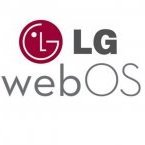What are LG`s plans for webOS ?
-
Similar Topics
-
By tarakdave
I have noted that TV WebOS is very slow and when you start TV it taking long time to go to any menu.
Is there any way to make it fast ?
Is there any way that it will update program guide quickly ?
Is it possble to change Change font size ?
Does magic remote cofigurable ? Is it possible to change remote scroll wheel to sound insted of changing channel ?
If you connect to any HDMI device it taking long time to switch back to normal TV mode some time it requied to switch off an switch on.
This is dumb OS. I should have check before buying it. Please any one has answer to make it fast ?
Is it is possible to change OS if I dont want to use WebOS ?
New buyer please check before you jump to WebOS
-
By Nick Payne
On our LG G1 OLED, when watching a program on Binge, the Binge app restarts itself every 20 minutes or so with a message about needing to restart to free up memory. Power-cycling the TV doesn't fix the problem, nor does running the "Memory Optimiser" function from system settings. None of the other streaming service apps we have on the TV have this problem - Prime Video, Stan, Netflix, Disney+, Britbox, ABC iView, SBS On Demand, Youtube. Those are the only other apps installed on the TV. I've checked the LG WebOS version and checked for app updates, and everything is latest version.
If I run the Binge Android app on my Chromecast with Google TV, it works without any problems when streaming the same programs.
-
By Bella Lee
In fact, Spotify doesn't offer its service to LG webOS Smartwatch now. If you want to listen to Spotify songs on LG webOS Smartwatch, you'd need a
link hidden, please login to view. With Tunelf Spotibeat Music Converter, you can and then transfer them to LG webOS Smartwatch for playing without limits. -
By Alex
Samsung has made fridges with touchscreens before. LG has made fridges with doors that turn transparent to show you the inside. This year at CES 2018, those two ideas are finally merging into one with LG’s new InstaView ThinQ smart refrigerator, which features a 29-inch touchscreen that becomes transparent if users knock on it twice.
LG actually tried this two years ago, with a version called the Smart InstaView Door-in-Door that ran a full version of Windows 10, but it’s not clear that the company ever shipped the Windows version.
This version uses the touchscreen to manage your food using LG’s webOS software and Amazon’s Alexa, which will let you tag food with virtual stickers and expiration dates and get automatic reminders when things are running low or about to go bad. There’s also a wide-angle panoramic camera on the inside of the fridge that will let you remotely view your fridge while you’re out and about to check and see if you’re actually out of milk or not.
Unfortunately, the only image that LG has shared showing the fridge is a low-resolution shot on its YouTube page banner, but it seems that you’ll be able to still use the screen while it’s translucent, allowing you to tag food directly in a vaguely augmented reality-esque move.
LG is also touting how all of its ThinQ kitchen gadgets can talk to each other to make kitchen tasks easier. So your ThinQ fridge can talk to your EasyClean oven, which will help you cook food through step-by-step instructions from the recipe app from your fridge. Then, your EasyClean oven can notify your QuadWash dishwasher about the kind of meal you cooked, so it can more efficiently select a wash cycle for that dish. Of course, all this requires spending thousands of dollars replacing every appliance in your kitchen (and if this all works as well as LG claims it does), but it’s still an intriguing vision of a Jetsons-like future utopia.
No price or release date for the InstaView ThinQ refrigerator or any of LG’s other new appliances have yet been announced.
Source:
link hidden, please login to view 
-
By Junaid Ahmed
hello sir can you provide gCMOB application for our Tv we have installed CCTV cameras and to access that we need a application called gCMOB
-
-
Similar Tagged Content
-
- 1 answer
- 2,002 views
-
- 1 answer
- 10,366 views
-
- 0 answers
- 6,153 views
-
- 0 answers
- 2,187 views
-







Recommended Posts
Join the conversation
You can post now and register later. If you have an account, sign in now to post with your account.